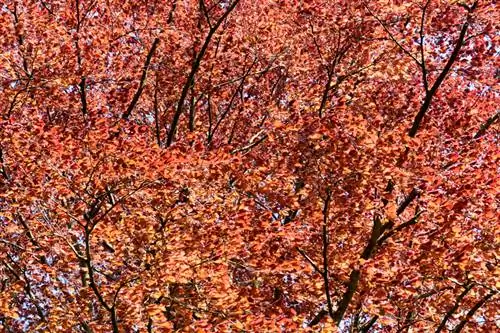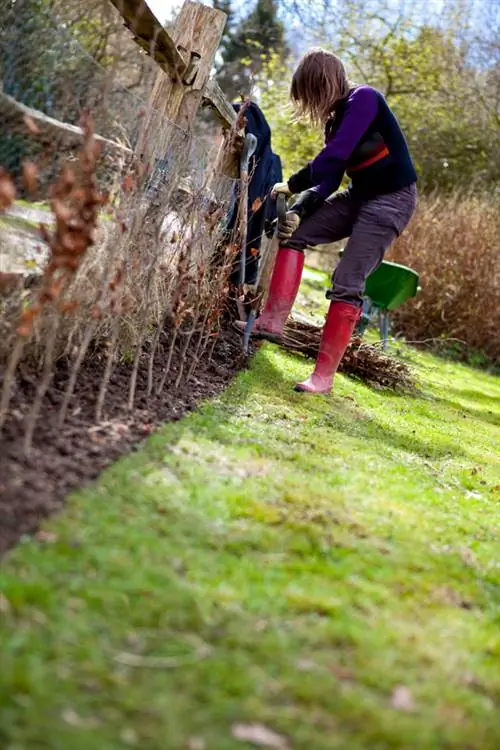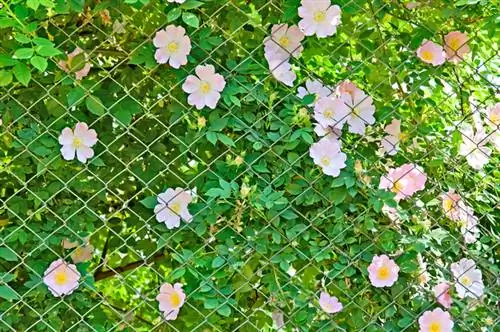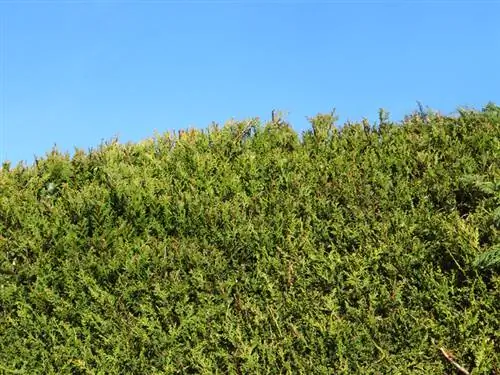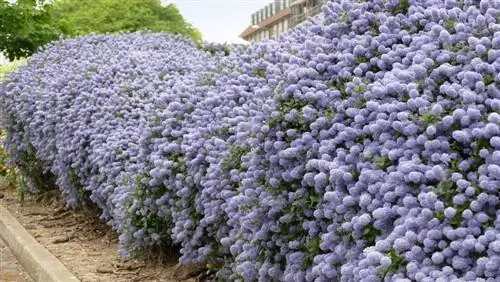- Author admin [email protected].
- Public 2023-12-16 16:46.
- Last modified 2025-06-01 06:02.
Not all medlar are the same. While some are ideal as ground cover, others are ideal plants for creating hedges. Others are more suitable as solitary trees. Here is the medlar, which is ideal as a hedge.
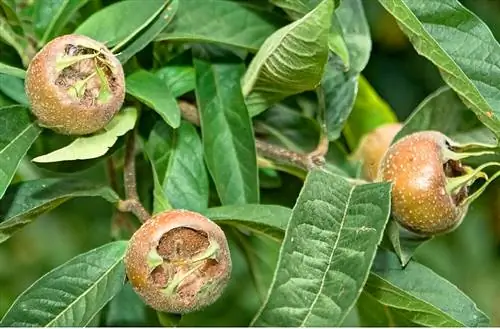
Which medlar is suitable for a hedge?
The medlar is the ideal type of medlar for hedges because it is evergreen, grows quickly and is easy to cut. With its colorful foliage, intense red young shoots and bright white flowers, it offers an attractive look in the garden.
The loquat - the most popular medlar for hedges
Among the medlars, the loquat stands out for hedge design. It is considered extremely popular, with the 'Red Robin' variety in particular outperforming other specimens. But why is the medlar so popular?
She impresses with:
- its evergreen and colorful foliage
- their intensely red-colored young shoots
- their flowers
- its broad, upright and compact growth
- their growth rate (between 20 and 40 cm per year)
Its maximum height is 5 m. Just three years after planting, it has become an opaque tree. For these reasons, the loquat is an ideal hedge.
A colorful foliage
The foliage of the loquat is one of its best features. It is shiny, colored green in summer and red in winter. The leaves do not fall off due to low temperatures, but rather renew themselves sporadically. Next to other hedges such as privet or cherry laurel, the excitingly colored foliage of the medlar in winter creates an enormous contrast.
How should the loquat be cut as a hedge?
The loquat is considered to tolerate cutting well. All you need to do is pull out the pruning shears (€14.00 on Amazon) once a year. But be careful: In order to enjoy the bright white flowers, this plant should not be cut before it blooms. Pruning is carried out towards the end of June. All you need to do is cut back the branches slightly.
What needs to be taken into account when handling?
- Protect young specimens from frost and wind (hardy to -22 °C when old)
- water regularly at first (keep the soil moist)
- Rough, cool locations are generally not suitable as a location
- otherwise: extremely easy to care for and undemanding
Tips & Tricks
In contrast to the medlar, the medlar with the botanical name Mespilus is less suitable as a hedge. On the one hand it is summer green and on the other hand it is usually bare in the lower area. In order to train it as a hedge, a lot of cuts are necessary.


